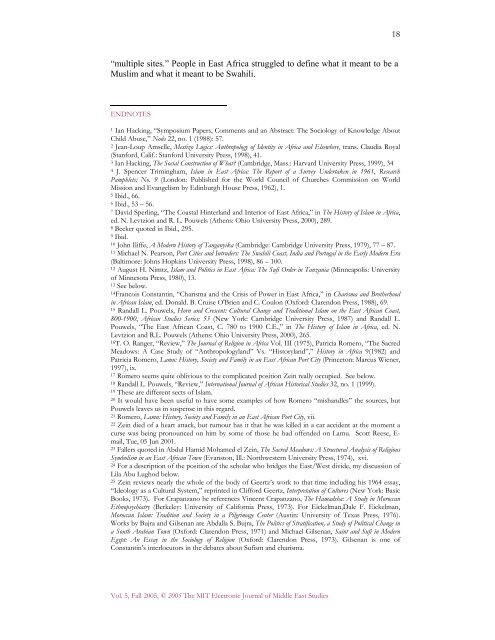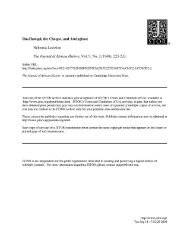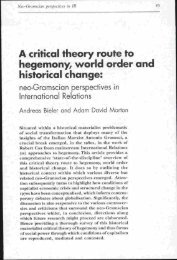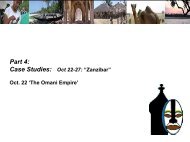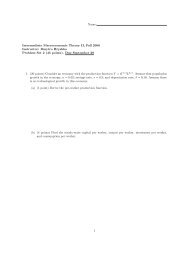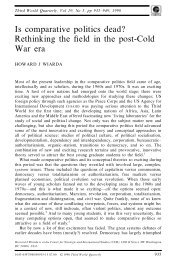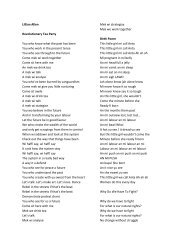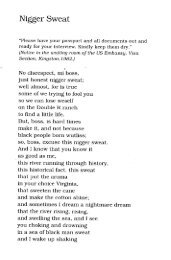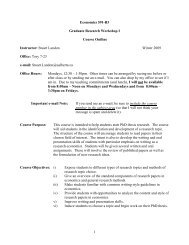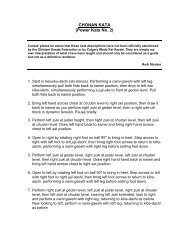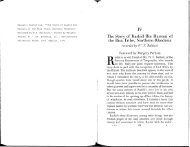personal memories revolutionary states and indian ocean migrations
personal memories revolutionary states and indian ocean migrations
personal memories revolutionary states and indian ocean migrations
You also want an ePaper? Increase the reach of your titles
YUMPU automatically turns print PDFs into web optimized ePapers that Google loves.
“multiple sites.” People in East Africa struggled to define what it meant to be a<br />
Muslim <strong>and</strong> what it meant to be Swahili.<br />
ENDNOTES<br />
1 Ian Hacking, “Symposium Papers, Comments <strong>and</strong> an Abstract: The Sociology of Knowledge About<br />
Child Abuse,” Noûs 22, no. 1 (1988): 57.<br />
2 Jean-Loup Amselle, Mestizo Logics: Anthropology of Identity in Africa <strong>and</strong> Elsewhere, trans. Claudia Royal<br />
(Stanford, Calif.: Stanford University Press, 1998), 41.<br />
3 Ian Hacking, The Social Construction of What? (Cambridge, Mass.: Harvard University Press, 1999), 34<br />
4 J. Spencer Trimingham, Islam in East Africa: The Report of a Survey Undertaken in 1961, Research<br />
Pamphlets; No. 9 (London: Published for the World Council of Churches Commission on World<br />
Mission <strong>and</strong> Evangelism by Edinburgh House Press, 1962), 1.<br />
5 Ibid., 66.<br />
6 Ibid., 53 – 56.<br />
7 David Sperling, “The Coastal Hinterl<strong>and</strong> <strong>and</strong> Interior of East Africa,” in The History of Islam in Africa,<br />
ed. N. Levtzion <strong>and</strong> R. L. Pouwels (Athens: Ohio University Press, 2000), 289.<br />
8 Becker quoted in Ibid., 295.<br />
9 Ibid.<br />
10 John Iliffe, A Modern History of Tanganyika (Cambridge: Cambridge University Press, 1979), 77 – 87.<br />
11 Michael N. Pearson, Port Cities <strong>and</strong> Intruders: The Swahili Coast, India <strong>and</strong> Portugal in the Early Modern Era<br />
(Baltimore: Johns Hopkins University Press, 1998), 86 – 100.<br />
12 August H. Nimtz, Islam <strong>and</strong> Politics in East Africa: The Sufi Order in Tanzania (Minneapolis: University<br />
of Minnesota Press, 1980), 13.<br />
13 See below.<br />
14Francois Constantin, “Charisma <strong>and</strong> the Crisis of Power in East Africa,” in Charisma <strong>and</strong> Brotherhood<br />
in African Islam, ed. Donald. B. Cruise O'Brien <strong>and</strong> C. Coulon (Oxford: Clarendon Press, 1988), 69.<br />
15 R<strong>and</strong>all L. Pouwels, Horn <strong>and</strong> Crescent: Cultural Change <strong>and</strong> Traditional Islam on the East African Coast,<br />
800-1900, African Studies Series; 53 (New York: Cambridge University Press, 1987) <strong>and</strong> R<strong>and</strong>all L.<br />
Pouwels, “The East African Coast, C. 780 to 1900 C.E.,” in The History of Islam in Africa, ed. N.<br />
Levtzion <strong>and</strong> R.L. Pouwels (Athens: Ohio University Press, 2000), 265.<br />
16T. O. Ranger, “Review,” The Journal of Religion in Africa Vol. III (1975), Patricia Romero, “The Sacred<br />
Meadows: A Case Study of “Anthropologyl<strong>and</strong>” Vs. “Historyl<strong>and</strong>”,” History in Africa 9(1982) <strong>and</strong><br />
Patricia Romero, Lamu: History, Society <strong>and</strong> Family in an East African Port City (Princeton: Marcus Wiener,<br />
1997), ix.<br />
17 Romero seems quite oblivious to the complicated position Zein really occupied. See below.<br />
18 R<strong>and</strong>all L. Pouwels, “Review,” International Journal of African Historical Studies 32, no. 1 (1999).<br />
19 These are different sects of Islam.<br />
20 It would have been useful to have some examples of how Romero “mish<strong>and</strong>les” the sources, but<br />
Pouwels leaves us in suspense in this regard.<br />
21 Romero, Lamu: History, Society <strong>and</strong> Family in an East African Port City, vii.<br />
22 Zein died of a heart attack, but rumour has it that he was killed in a car accident at the moment a<br />
curse was being pronounced on him by some of those he had offended on Lamu. Scott Reese, Email,<br />
Tue, 05 Jun 2001.<br />
23 Fallers quoted in Abdul Hamid Mohamed el Zein, The Sacred Meadows: A Structural Analysis of Religious<br />
Symbolism in an East African Town (Evanston, Ill.: Northwestern University Press, 1974), xvi.<br />
24 For a description of the position of the scholar who bridges the East/West divide, my discussion of<br />
Lila Abu Lughod below.<br />
25 Zein reviews nearly the whole of the body of Geertz’s work to that time including his 1964 essay,<br />
“Ideology as a Cultural System,” reprinted in Clifford Geertz, Interpretation of Cultures (New York: Basic<br />
Books, 1973). For Crapanzano he references Vincent Crapanzano, The Hamadsha: A Study in Moroccan<br />
Ethnopsychiatry (Berkeley: University of California Press, 1973). For Eickelman,Dale F. Eickelman,<br />
Moroccan Islam: Tradition <strong>and</strong> Society in a Pilgrimage Center (Austin: University of Texas Press, 1976).<br />
Works by Bujra <strong>and</strong> Gilsenan are Abdalla S. Bujra, The Politics of Stratification, a Study of Political Change in<br />
a South Arabian Town (Oxford: Clarendon Press, 1971) <strong>and</strong> Michael Gilsenan, Saint <strong>and</strong> Sufi in Modern<br />
Egypt: An Essay in the Sociology of Religion (Oxford: Clarendon Press, 1973). Gilsenan is one of<br />
Constantin’s interlocutors in the debates about Sufism <strong>and</strong> charisma.<br />
Vol. 5, Fall 2005, © 2005 The MIT Electronic Journal of Middle East Studies<br />
18


